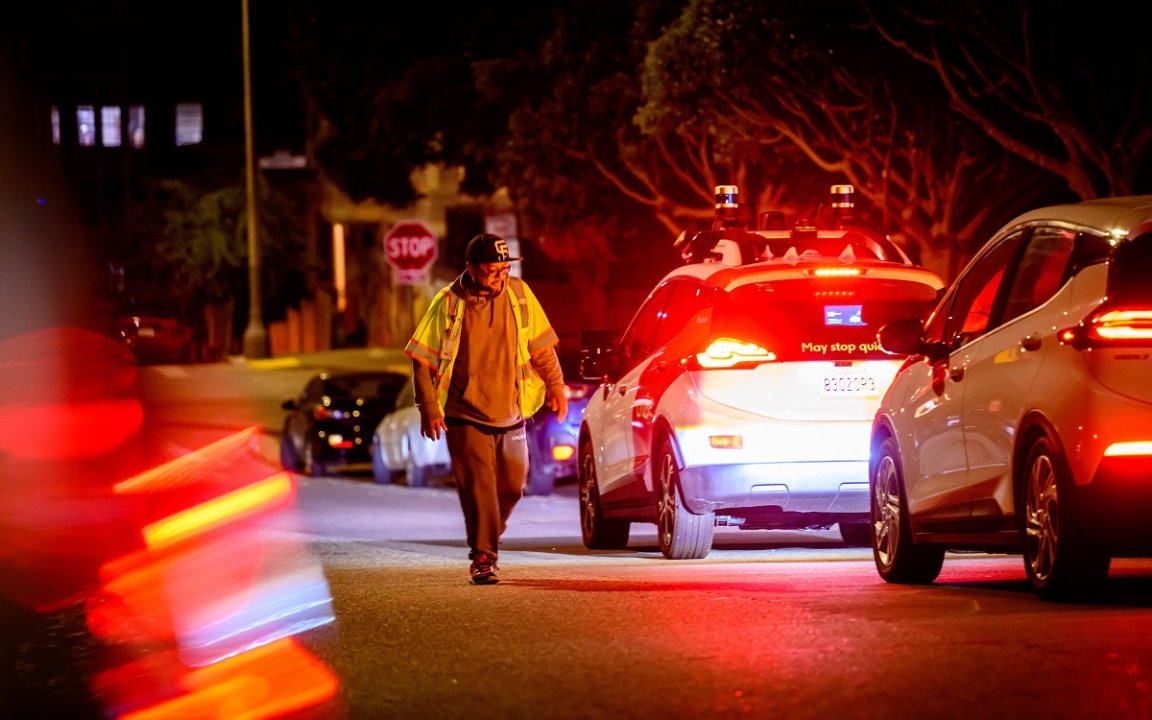
Cruisin’ and Bruisin’
Autonomous carmaker Cruise started beta testing its robotaxis in Houston this week — and unfortunately for the company, things aren’t off to a particularly inspiring start.
As the Houston Chronicle reports, the newly rolled-out self-driving vehicles caused a traffic jam on Monday night when three of the cars slowed to a stop at an intersection, blocking all other vehicles from passing through while struggling to make sense of a four-way red light.
Onlookers were quick to take to social media to share images of the slow-down, expressing their frustrations with the autonomous cars.
“Three self-driving cars have blocked all traffic at Montrose and Hawthorne,” read a post from one X-formerly-Twitter user, complete with pictures of Cruise’s Monday night debacle. “Is this really the future of mobility in America?”
Another X user, Simon Newton, posted a facepalm-inducing video showing several police officers struggling to get an inanimate and unmanned vehicle to cooperate with commands to get moving.
“The police were tapping on the glass and asking the car to move on,” Newton, a Montrose resident, later told the Chronicle of the comical police encounter. “All the other human-driven cars could respond to the police. The Cruise vehicles can’t do that.”
So when a Cruise car stops permanently on Montrose Blvd and 2 squad cars and 4 officers respond, who pays for that? pic.twitter.com/ycikxhi3Xz
— Simon (@simontrose) September 26, 2023
Four-Way Failure
Cruise has defended its vehicles, arguing that the cars had a really hard traffic problem to figure out, okay?
“Our vehicles were stopped at an intersection where the lights were not cycling and showed all red,” a Cruise representative told the Chronicle. “While some vehicles took a little time to safely navigate the intersection, all vehicles were able to clear the intersection autonomously. Safety is embedded in everything we do and our vehicles are designed to adhere to traffic signals and follow rules of the road.”
But Cruise’s excuse for the cars’ blunder perfectly illustrates one of the central critiques of autonomous vehicles, which is that they often lack contextual nuance. Surely, an experienced human driver would have known to treat the red lights as a classic four-way stop; Cruise’s vehicles, however, were unable to parse through the more layered traffic problem.
This is just the latest embarrassment for Cruise. The startup has seen its cars cause traffic jams across Texas and California, causing gridlocked streets in Austin and experiencing a very sketchy WiFi failure in San Francisco. And though Cruise CEO Kyle Vogt recently told The Washington Post that he believes that the vehicles’ failures are “sensationalized,” the fact remains: the company’s cars are anything but perfect, and the people who actually live in the communities where these cars are being tested are bearing the brunt of the cars’ failures.
More on Cruise: Self-Driving Car Gets Stuck in Freshly Poured Concrete